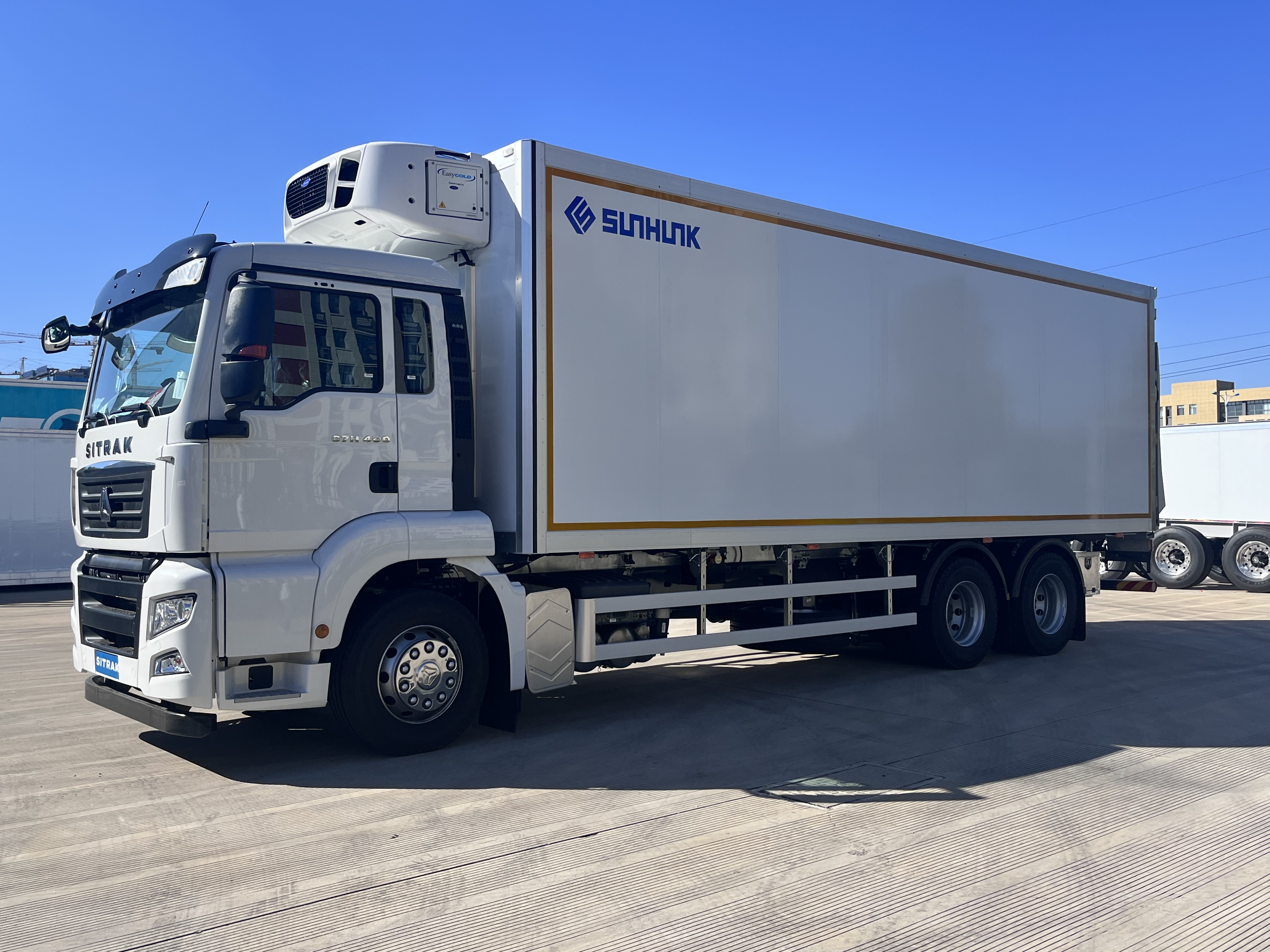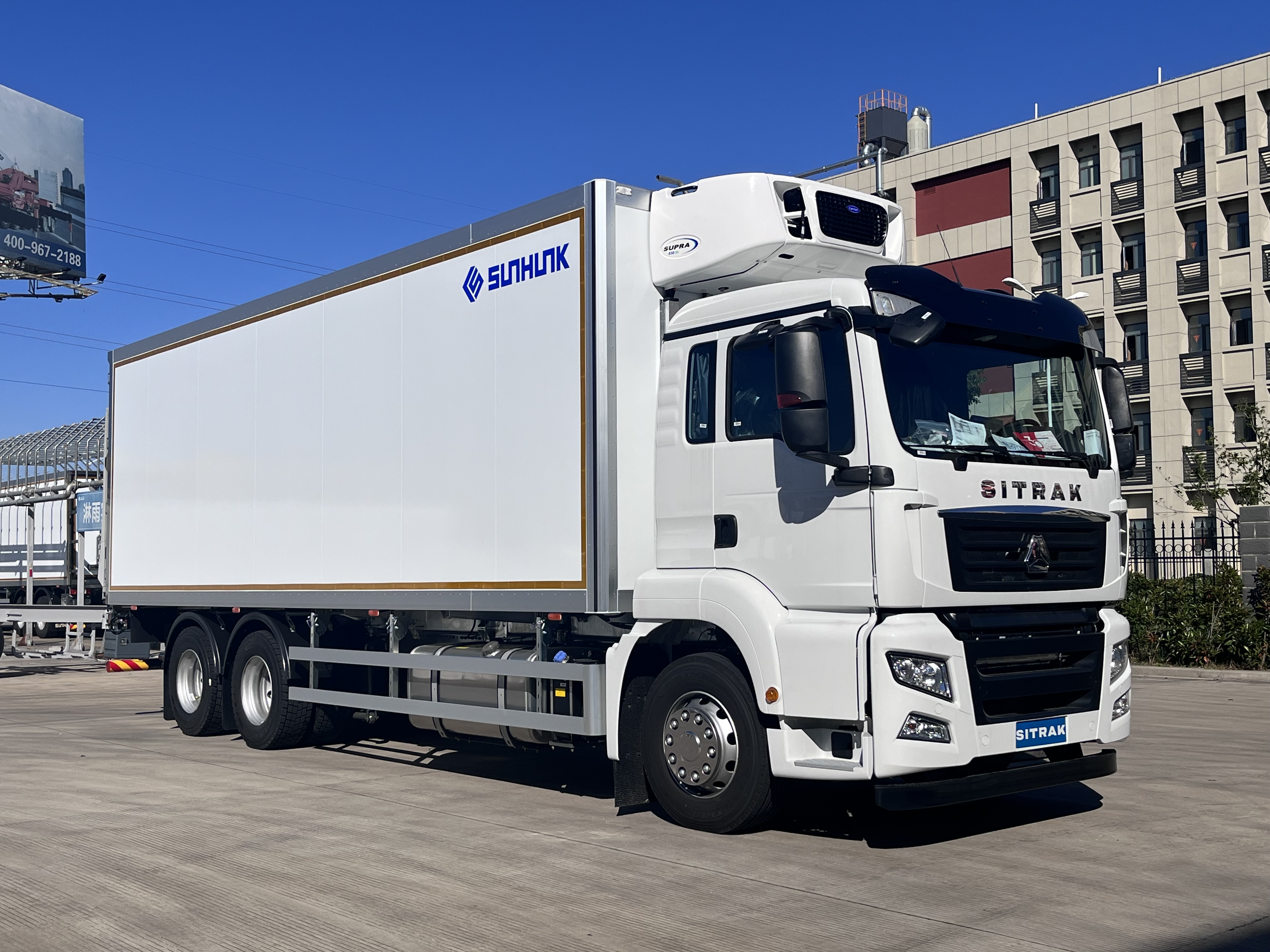- PRODUCTS
- SOLUTION
- SERVICE
- NEWS
- ABOUT US
A 5-ton reefer truck can transport a variety of goods, including fresh seafood, diverse fruits, sensitive pharmaceuticals, and fresh flowers.
The challenge of cold chain logistics is not only temperature control, but also how to ensure the freshness and safety during transportation. The travelling of seafood over distance is time sensitive and requires optimal temperatures to prevent a decline in the quality. The recommended transport temperature for deep-sea tuna is -1°C ~ 1°C, which will make the transporting life longer than about half under regular condition.
Seafood is different regarding cold chain requirements based on the seafood being delivered. Crabs and lobsters are best when kept at a slightly higher temperature between 0°-2°C, with shellfish requiring an even higher one. Such refrigerated trucks are needed because the truck temperature must be adjustable. 5-ton refrigerated trucks are often controlled by an electronic controller, and the temperature inside a refrigeration unit can be automatically adjusted according to what type of seafood you are carrying with 0.5°C accuracy.

Cold chain transportation can directly affect the supply of seafood market. Approximately 60% of all imported seafood products are transported using the cold chain. The efficiency of cold chain transport, especially in holiday peak seasons, has a significant impact on the supply capacity of the market at critical moments like these holidays and Saturdays when demand for such service is more than double its usual. The cooling system of the refrigerated truck more and has better energy management, which means it requires less efficient to keep up mindset.
Technology improvements such as solar assisted systems are beginning to reduce operational costs and decrease their impact on the environment. If the cold chain transport system is improved, seafood waste can be reduced from 15% loss, below 5%, which has a considerable effect on the economic interest of the industry.
A 5-ton refrigerated truck to go, from the line not only needs transport overland show technology and management can be. In the cold chain, temperature controlled and quick logistics companies ensure that fruits are reaching into fresh condition in end markets. Transport of fruit requires different temperatures. The lower the temperature, within limits, in a cold chain can be maintained during the storage and transport of citrus fruits to about 3–8°C; apples—0–4°C fare better kept at even cooler temperatures when stored or transported between harvest or Wendy Liss prices. Shelf-life under proper refrigeration for specific cases should more than double shelf life transporting fruit over long distances by as much as factor 40.
The needs of consumers have, for the most part, changed significantly with crops being shipped around the globe and seemingly endless variety on offer all year round. During the winter, you can count on mangoes and pineapples to be in demand no matter what. Their 5-ton refrigerated truck can transport these fruits from the producer to anywhere around the globe in any season fresh as new. Imported fruits such as cherries and blueberries need to have temperature control throughout the continuous trip, even during storage in warehouses shipping out of any plant or location before finally reaching its destination. In the cold chain transportation of imported fruits, loss rates can be decreased to less than 5%, while traditional processes lead to a loss rate of more than 20%.
Today, refrigerated trucks are equipped with high-tech temperature and humidity monitoring systems that regulate the internal environment as needed so that fruits can always have an optimal transportation environment no matter how long a journey is. The transportation status of fruits can be monitored remotely, and the feedback by IoT technology enables supply chain managers to adjust transport strategies in real time when changes occur like sudden weather conditions or traffic jams. Consumers are more likely to be satisfied with fruits moved through the cold chain. This way of transporting not only maintains the freshness level of fruits but also increases consumer reliance on the brand.
Vehicle design and application of technology too makes it possible for the products to reach consumers from the slaughterhouse in a condition that is perfect, right on its way until supermarket shelves. Fresh meat should be delivered at 0-4 degrees C, an environment where not only the action of microorganisms is largely inhibited, but also chemical processes are slowed down quite significantly to extend the period during which you can enjoy fresh and juicy slices. At this temperature, the freshness period of meat can be doubled as cooling is not a cold chain processed meat to its possible optimum strength due overnight transport times in summer by up to 24 hrs expanded.
A 5-ton refrigerated truck is no longer just holding goods in low temperature margin and capable of very good cold chain preservation but integrated numerous sensors which provides the capability to monitor product transportation real-time. A case study of one horn cross-border meat transportation, the average market loss rate of meat products from 20% reduced to less than 5%, that is given precise temperature control.
Another most important benefit of a 5 ton refrigerated truck is that it helps quickly replace the market volume in peak demand conditions for holidays. Just in terms of response speed by using cold chain to deliver meat products, it can be 50% faster than non-cold chain during the major holidays such as Chinese New Year (CNY) and Christmas. During the past five years, conversion to newer cold chain technologies has reduced carbon emissions from meat transportation by 30% on average.
With the help of 5-ton refrigerated trucks in place, precise temperature control and professional logistics management are applied to make sure that drug safety is well maintained. The very first thing that is desirable for drug transport: a temperature-controlled environment. A lot of drugs must be transported between 2 and 8°C in order to ensure that their biological or immunological properties are not compromised. The carrier wave device allows a temperature control system accurate to ±0.5°C in 5-ton refrigerated trucks.
Modern refrigerated trucks are equipped with temperature and humidity tracking recording systems which in return observe the current state of these two parameters who sends alert if there are any abnormalities prominent at instantaneous level. Global Drug Shipment Case StudyIn another case of an international drug transport, the shipment team was able to correct temperature excursions in real time through the monitoring system keeps good conditions allowing no damage on drugs.
Refrigerated trucks are designed to adapt swiftly as the load condition and on-road conditions change. With these refrigerated trucks, drug suppliers can deliver their drugs 20% faster compared to normal transport means. Cold chain transport efficient and reliable effect directly related to the quality of medical services, especially in emergency handling needs can not be replaced five-ton refrigerated trucks.
This is also a test in technology and operational details for a 5-ton refrigerated truck. The appropriate storage temperature of fresh cut flowers usually scales 1 to 7°C and tends over humidity percentage levels up to achieve the value scale at exceed ninety-percent. The environments at which there grew to become on sustainer where Flora would really run for incredible are dry and above sea level areas, the flora evolved in those surroundings help them take in gentle without recourse of moisture control systems around. Otherwise, when running temperature and humidity control system of 5 tons refrigerated truck, the changes in external temperatures can be adjusted at any time to ensure that even if there is an accident five-star table attacking plus or minus a few seconds remain stable. By doing this, the fresh flower life span can be extended by 50% of normal shelf life methods.

Most of these gases can be filtered from the air by built-in special filtration systems that are equipped in modern trucks, to keep fresh flowers longer. These filter systems are able to reduce up to 95% the presence of ethylene. In addition to having the temperatures and humidity be easy for long distances, it is necessary that they are stable throughout this process. The efficiency of the cold chain transport system helps keep flowers fresh and appealing even in across border transportation.